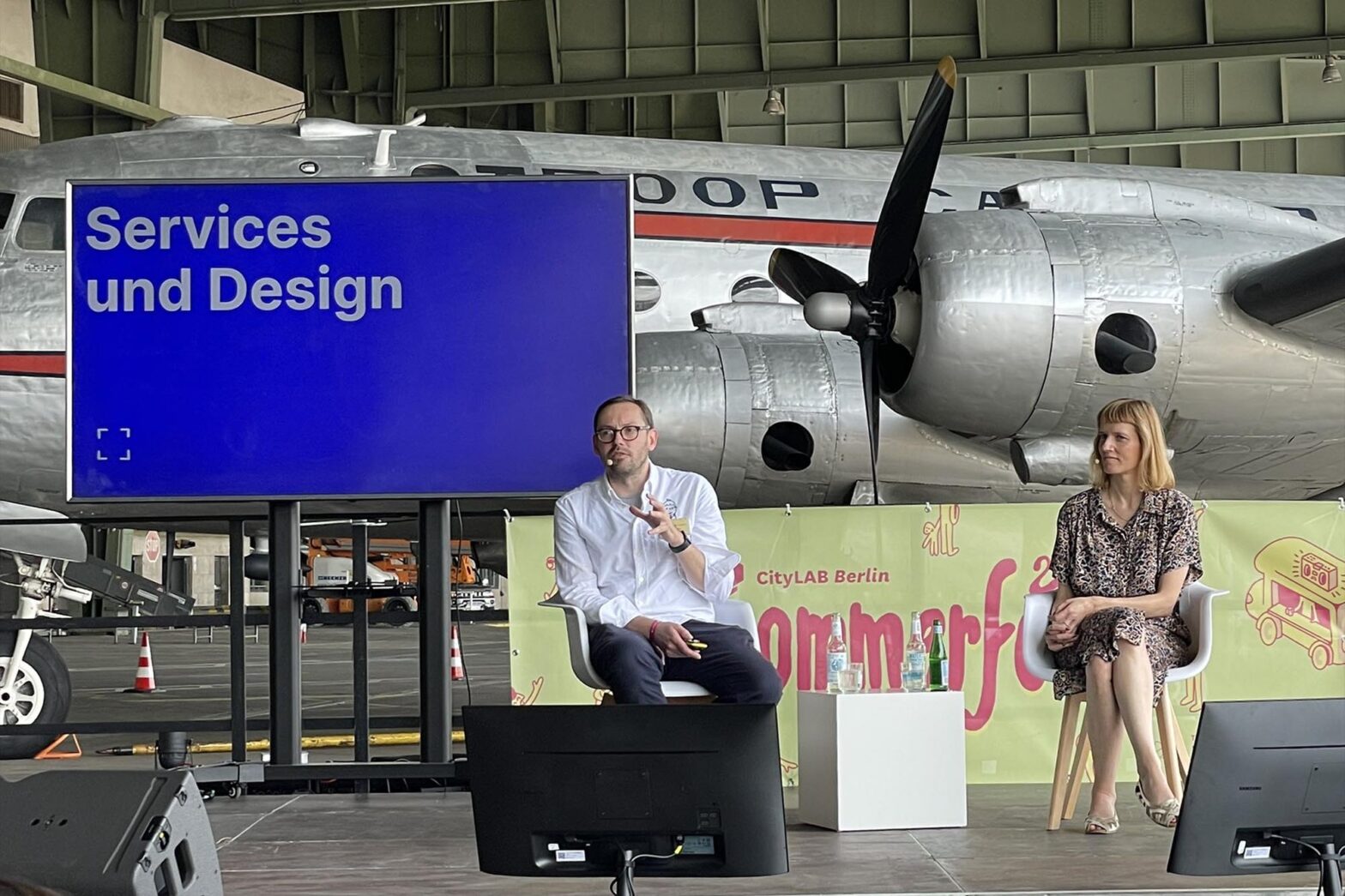On Thursday, my colleague Charlotte and I had the most impressive backdrop when speaking at the CityLAB summer festival.
For more than 30 minutes, we talked about service design and what it needs for it to be successful. In addition to my slides from last week’s presentation, Charlotte spoke about the design work for the new real estate tax declaration service launching on Monday.
Aiming to work in the open as much as time and circumstances allow, I created a dedicated folder for design documents on our organisation’s GitHub account. It already had a repository for public documents. So that’s where I added this week’s and last week’s presentation slides.
Planning ahead
The day before, the entire leadership team spent time with the objectives and key results (ORKs) for the next quarter. We clarified some essential why questions and unpicked how the quarterly OKRs for the organisation link to the overall mission and team OKRs link to multi-year product visions.
Our drafts will require some refinement in the coming days, but I’m already excited about the strategic outlooking work ahead.
We also looked into staffing for teams and projects for the next months. Even after doing it for a few years, staffing feels like playing Tetris at a higher speed level – under severe time-pressure, you deal with various needs with some imperfect options.
Preparing more public speaking
After a busy June, public sector and design conferences are taking a break. The next bigger event will be in Edinburgh, the Service Design in Government conference end of September. Kara, Clara and I started discussing ideas for our workshop on the topic ‘Design culture that delivers’. We’ll only have 60 minutes and want to ensure an even give and take for the workshop participants and us. I expect to weave in some of my experience from the months at the Digital Service.
I also had a chat with Adam from Service Design Drinks Berlin. After we handed over the format to him and others some years ago, I’m glad it’s still around. The folks are returning to a somewhat monthly rhythm. And I hope we can have a slot in early September. It will be an excellent opportunity for design team members to share their work.
Another one will be Public Service Lab Day 2022 in mid-October in Freiburg. I’d like us to present a case and show what user-centred design looks like at a Federal-level service.
As we had another senior designer, Tom, joining us today, we’ll have even more capacity to do public speaking.
Exchanging experiences
Not public speaking, but instead a friendly exchange with some designers at GDS: we reached out to them after reading their blog post on improving inclusion for digital identity in government as that’s something relevant in some of our projects at the moment. I already concluded that the other week: having the option to talk to colleagues internationally working on similar challenges is one of the best perks of working in the public instead of the private sector.
In the context of national communities of practice, I used the handy community canvas to sketch what a better exchange across the German government and its public sector could look like. The framework and its tool cover 3 sections – identity, experience, and structure – which are divided into 17 themes. A worksheet provides questions and prompts to fill these. Once done, the completed canvas summarises the value proposition of a community of practice and gives an overview of its operating model. Again not public-facing, but doing this community work can allow us to build knowledge together, solve issues once, and provide support in an environment that doesn’t understand user-centred design yet.
What’s next
I keep struggling a little bit with switching back and forth between English and German. Luckily, I found LanguageTool to spell my German sentences almost as well as Grammarly has been doing that for the last 5 years for English. I should get myself a premium version of LanguageTool and install its native tools.
Next week, we’ll launch a new offering at the DigitalService, which I look forward to. I’m also going to be travelling and hope to be able to do some non-distracted deep work on the train across Europe.

